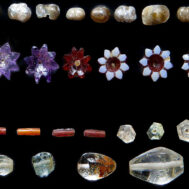Taliban Ban Images of ‘Living Things’

Three men, one holding infant and baby goat, photo by Françoise Foliot, 1974-1975, Creative Commons Attribution-Share Alike 4.0 International license
On October 14, 2024, the Taliban Ministry of Justice announced enforcement of a new Vice and Virtue Law that bans the media from publishing images of living beings. The Taliban Ministry for the Propagation of Virtue and the Prevention of Vice issued a notice stating that some provinces are immediately implementing the ban. Afghanistan’s Tolo News has reported that State media in Takhar, Maidan Wardak, and Kandahar provinces have already ceased broadcasting such images. It is reported that independent local media in some provinces have stopped airing videos and images of people, replacing them with nature footage. This is based on the Taliban’s atypical interpretation of Islamic law, under which such images violate Sharia principles. It is implied that people should not even photograph themselves, their families or children.
(It should be pointed out that Islam rejects representations of animal or human forms that encourage idolatry or polytheism. Art in the Islamic world does not reject representation of the natural world per se, as should be obvious to anyone familiar with its history.)
A similar law was imposed during the first Taliban regime (1996-2001), but was never rigorously implemented except in the Taliban’s iconoclastic destruction of artworks, such as the blowing up of the Bamiyan Buddhas and the smashing of the collections of the Kabul Museum with sledgehammers in 2001.

Pashtun women and children, photo by Françoise Foliot, 1974-1975, Creative Commons Attribution-Share Alike 4.0 International license
The Vice and Virtue law consists of four chapters and 35 articles. It addresses a wide range of issues. Article 13 covers women’s modesty. Women must cover themselves and their faces completely to prevent “temptation” and speak only when absolutely necessary and never loudly. A woman’s voice is deemed intimate and so should not be heard singing, reciting, or reading aloud in public. It is forbidden for women to look at men they are not related to by blood or marriage and vice versa. Other articles covering restrictions already implemented that forbid women to go out without a male companion or travel without a male guardian are reiterated in the new law.
Article 22 prohibits men from wearing ties, trimming beards below fist length, and grooming their hair in ways seen as un-Islamic. Articles warn against misuse of typewriters, radios, and other media tools. Adopting any sort of “Western practices” or having friendships with non-believers are outlawed. Restrictions include banning thin, short, or tight clothing and requiring the presence of a male guardian for women in public transportation.
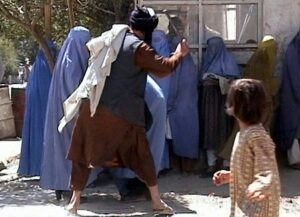
Video screengrab recorded by RAWA in Kabul showing Taliban from department of Amr bil Ma-roof (Promotion of Virtue and Prevention of Vice, Taliban religious police) beating a woman because she removed her chador in public. Courtesy RAWA.
The new media restrictions contradict how the Taliban use media themselves. Taliban officials regularly post photos of people on social media platforms. The Afghan Independent Journalists Union noted that restrictions initially targeted state-run media but are now expanding to independent outlets. Questions remain on whether the law applies to foreign media operating in Afghanistan.
While claiming to promote journalism by funding it through a central bureau, the Taliban have now effectively characterized independent journalism as unauthorized. All journalists have been ordered to register with this bureau to “assist” the media, which thus ostensibly qualifies for government support of unspecified funding.
While restricting media outlets from publishing images of living beings, Taliban officials themselves regularly post photos of people on social media platforms. The new law appears to contradict their own practices as well as ignoring the realities of modern digital communication.
Taliban Move Forward with China on Copper Mine at Mes Aynak
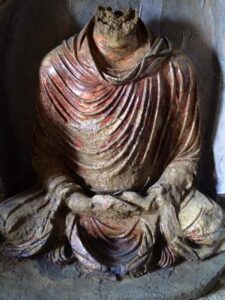
Mes Aynak. Figure of seated Buddha with head removed or destroyed. Credit Brent Huffman, www.Saving Mes Aynak.com
Mes Aynak is one of the most important ancient Buddhist sites ever discovered, with multiple shrines and fragile, sculpture-filled temples extending over 100 acres in the Logar mountains of Afghanistan. Beneath the site is the world’s second-largest copper deposit. The Taliban’s contract for excavation and exploitation of Mes Aynak, signed with China’s MCC company for a period of 30 years, estimates that the copper reserves in this mine exceed 11 million tons.
Astonishingly, the Taliban have been praised by a major NGO and in several international art publications simply for claiming – at the inauguration of a road project that is part of an agreement with China for this massive copper extraction – that they will “protect” the Buddhist site. True, Afghanistan’s Ministry of Mines and Petroleum announcements promise protection but they provide no plan for doing so. Both Afghan and Chinese representatives repeat that global standards will be followed, without saying what those standards are or how they will be achieved. Hamidullah Habibi, head of the Mes Aynak project at the Ministry of Mines and Petroleum, said only that: “Site preparation, the construction phase, excavation, processing, smelting, and site cleanup will each be carried out separately.”
Taliban officials repeatedly emphasize the economic, not cultural benefits of the mining project.
“The main goal of this project is the country’s development, and environmental standards to prevent harm to people have been studied. After evaluating the proposals, the necessary licenses will be issued.”
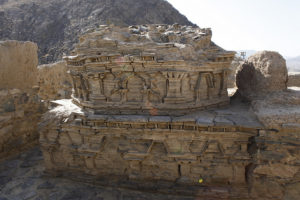
Mes Aynak, Stupa, US Embassy photo.
However, mining is Afghanistan has long been the most corrupt part of its economy. While parliamentarians in its former government enriched themselves with the proceeds of unpermitted, unsupervised mining operations that paid little or no tax, the Taliban came to power largely by means of exploiting illicit mining in the regions it controlled and exporting dozens of truckloads of minerals daily across Afghanistan’s border with Pakistan in a well-documented illicit trade. Furthermore, it should be noted that no Afghan government, ever, has seriously considered the devastating health and environmental consequences of mining operation on the lives of the impoverished subsistence farmers and herders of the regions where it operates.
Khairullah Khairkhwa, the acting Minister of Information and Culture, emphasized the importance of protecting ancient artifacts during the excavation of this mine. Khairullah Khairkhwa said: “The Islamic Emirate has made tireless efforts in this regard to both protect historical artifacts and utilize our mines for the benefit of the people.” Such claims are contradicted by the Taliban’s complete failure to ensure protection of other ancient sites in Afghanistan.
China Vice Minister of Culture and Tourism Li Qun said of the Mes Aynak site, that:
“The Mes Aynak Copper area has a historical background and holds special value in tourism, handicrafts, cultural development, and the Silk Road. I appreciate the Afghan government for protecting historical monuments and striving to preserve the artifacts of Mes Aynak at the governmental and global levels.”
Zhao Xing, the Chinese ambassador in Kabul, also noted that trade worth one billion dollars was conducted between Afghanistan and China last year.
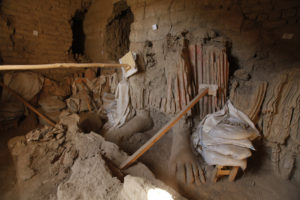
Mes Aynak Standing Figure in Tepe Kafirat, US Embassy Photo.
Such promises by the Afghans and the Chinese ring hollow. Past actions make clear that neither sees Mes Aynak as an irreplaceable cultural treasure for mankind, but only as a source of revenue for their government interests. Afghanistan’s government ‘interests’ today consist of repressing women, repressing dissent, and starving minority religions and cultures out of existence. Even if Mes Aynak’s vast copper resources were to enrich the Taliban, those most in need in Afghanistan are unlikely to benefit.
See: Afghanistan Sites Demolished by Bulldozers, Cultural Property News, March 30, 2024, and The Real Looting of Afghanistan: Pit Mining vs Heritage, Cultural Property News, October 5, 2021.
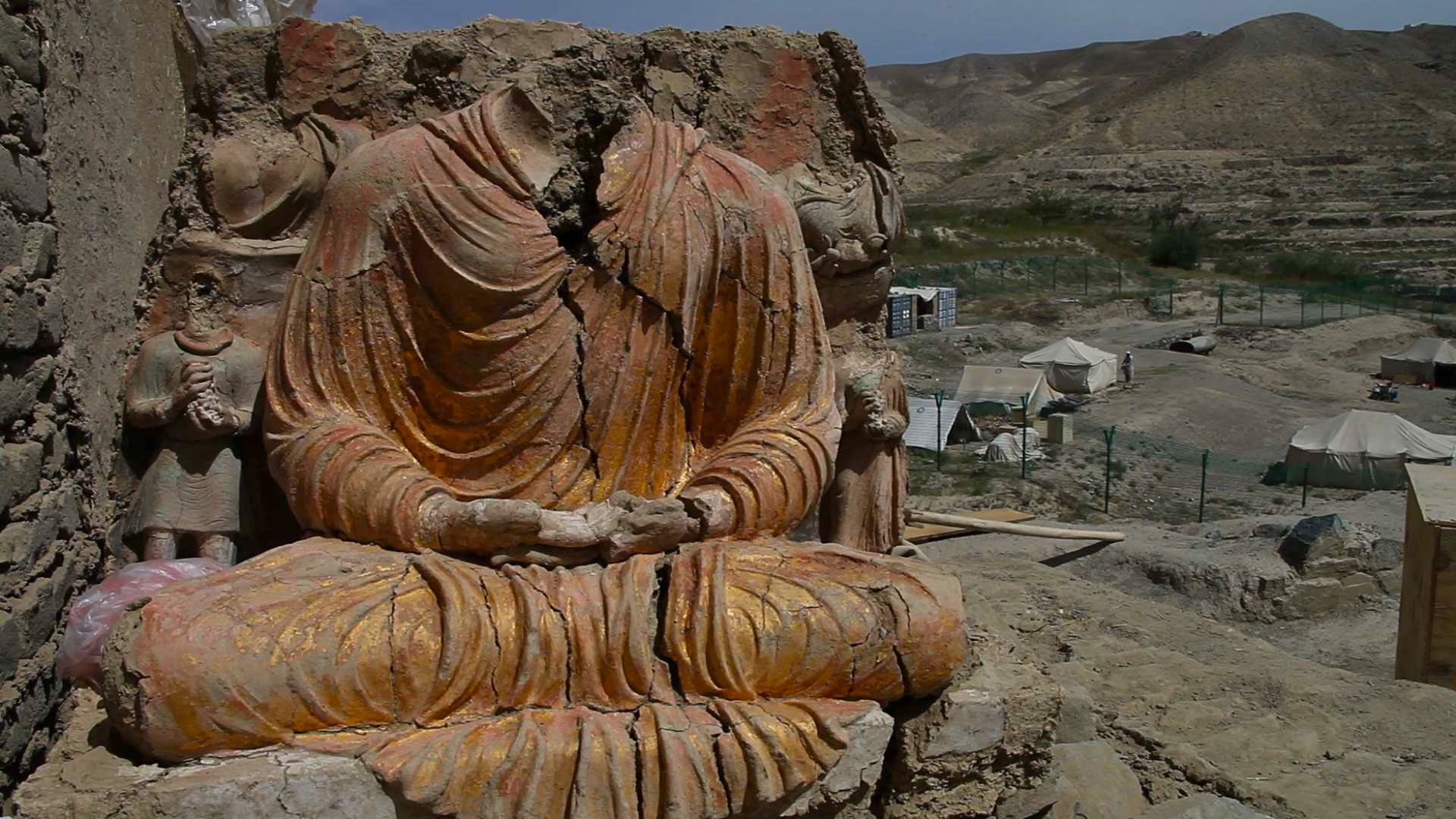 Mes Aynak, Seated Buddha. Photo Brent Huffman, "Saving Mes Aynak." Archeologists have uncovered countless priceless artifacts at an ancient Buddhist settlement south of Kabul: an ancient copper mine, a series of monasteries, homes and workshops.
Mes Aynak, Seated Buddha. Photo Brent Huffman, "Saving Mes Aynak." Archeologists have uncovered countless priceless artifacts at an ancient Buddhist settlement south of Kabul: an ancient copper mine, a series of monasteries, homes and workshops. 

